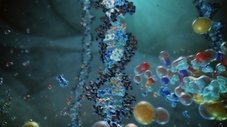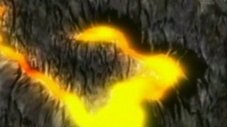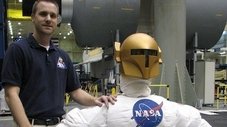
Broadcast date
15-01-2005 • 22 episodes
Episodes of this season
1. Human Extinction
Travel back in time to look at three of the largest mass extinctions that have decimated life on the planet. What caused these wipeouts?
2. Episode 2
3. Dirty Bombs
With contributions from some of the world's foremost scientists, we examine the newest developments and theories using the latest CGI graphics.
4. Dirty Bombs
This episode examines the effects of a hypothetical radiological attack from a car bomb on a major U.S. city. The purpose is to give useful information in the event that such an event should occur. The stories of several characters are told to dramatize the effects on various types of people: those responding in the "hot zone", a person near to the blast whose symptoms develop over time, a pregnant woman who must evacuate, and investigators who comb through debris to determine who set the blast.
5. Finding the Origin of Life

There are numerous theories about how life began on Earth. One thought is that it sprang up in the warm waters of a pond. Another suggests it arrived via comets. A different theory says life sprang from lightening and volcanoes. Scientists demonstrate that a spark of electricity applied to a primordial soup forms amino acids--the building blocks of life.
6. Killer Lakes
Since the death of 1,700 people near a lake in Africa, scientists have uncovered a terrifying series of hazards in lakes across the world.
7. Super Volcano

National Geographic Naked Science presents "Super Volcano", the inside documentary of what might happen if the Yellowstone Caldera were to erupt one day. This documentary includes a Yellowstone timeline of past eruptions, how Yellowstone would affect the world, and what impact will it be for the U.S.
8. Swallowed by the Sun
As the sun continues to age, it becomes increasingly hot and begins to expand, eventually swallowing up Earth. The temperatures on our planet will rise, turning the third rock from the sun into a scorched and uninhabitable wasteland. The changes our planet will undergo are depicted.
9. Was Darwin Wrong?
Does evolution really explain how life on Earth began? For decades, critics have attacked Darwin's theory and supported the case for a designer behind our existence. Could Darwin have been wrong?
10. 21st Century Submarine
Cameras offer a rare look inside the Navy's latest weapon in the fight against terrorism: the USS Florida, a guided missile submarine. In a Joint Operations mission, the sub smuggles Navy SEALS ashore to identify a terrorist location and the use shipboard guided missiles to destroy the target. The technology on the sub allows it to operate quieter and stay underwater longer than previous ships.
11. Iceland Volcano Eruption
Iceland's Eyjafjallajokull volcano erupted April 14, 2010, spewing aircraft-harming ash over most of Europe. It could cause Katla, its neighboring, larger volcano to erupt. NGC looks at Eyjafjallajokull before, during and after, explaining the science behind the chaos and the biggest disruption of air traffic since 9/11.
12. Living On The Moon

An insider's look at NASA's Constellation program which hopes to establish a human outpost on the moon by 2020.
13. Secret World Of Fireworks
Secret World of Fireworks explores the closely held secrets, recipes, and techniques from the world of pyrotechnic showmen. National Geographic takes a behind the scenes look into this exclusive world with unique access from Zambelli Internationale of New Castle, Pennsylvania - Americas First Family of Fireworks - along with rocket scientists and chemists from Los Alamos, New Mexico.
14. Earth's Core
Thousands of miles below the Earth's surface, a molten core generates a magnetic shield to protect us from solar radiation. But the protection could be fading and may be a sign that the magnetic poles are on the verge of flipping.
15. Earth Without The Moon
Each year, the moon moves an inch and one half farther away from Earth and is gaining momentum. The gravity it exerts on our planet acts as a stabilization mechinism, allowing for a consistent range of temperatures, seasons and days. If the moon moves just ten percent farther, it will cause unbelievable disaster for our planet, as Earth tips up to 90 degrees on its axis.
16. Easter Island Eclipse
This program looks at the remarkable occurrence of the total solar eclipse over Easter Island on July 11, 2010. The program looks at the science of the sun as it is revealed via the eclipse phenomenon and then takes us "near live" to the actual event as the film will be aired domestically only a few hours after it takes place there.
17. Twister Outbreak
On February 5th 2008 Super Tuesday 57 people lost their lives as 87 tornadoes devastated 5 states. It was Americas deadliest tornado outbreak in nearly a quarter of a century. Tornados are one of the most destructive forces of the planets with winds at 300 mile an hour. They can destroy buildings and hurl cars hundreds of feet through the air. Every year tornadoes decimate communities around the world killing hundreds of people. Planet Science deconstructs a tornado to learn how they form and how the develop such ferocious winds.
18. Snowball Earth
Imagine a world frozen solid. Imagine that vast sheets of ice hundreds of feet thick encased the entire planet--a giant snowball floating through space. This is not some exotic new world deep in space. It may be our world, the Earth. Some top-ranking scientists believe that in the past the Earth froze over completely for millions of years... then warmed up rapidly over 600 million years ago. Struggling against skepticism and disbelief for years, they have gathered a growing body of evidence that explains many mysteries, and others in the scientific community are slowly coming around to the extraordinary idea not just of the dramatic freeze, but of an equally dramatic thaw. Naked Science explores what may have been the most extreme period of Earths climatic history, Meeting all the major players of this controversial theory that is Snowball Earth.
19. Dead Tired
Dead Tired uncovers research exploring whether tiredness may lead to heart attack, diabetes, obesity, and depression. In a unique TV experiment, witness what happens to a healthy 25-year old when he cuts back his sleep from eight to three hours a night for one week. The results are shocking! He loses lucidity, dreams whilst awake and drives a car while fast asleep!
20. Man-Made Disasters
Some believe that man's insatiable desire to alter his environment is actually causing natural disasters. Urban sprawl perhaps strengthened a tornado in Atlanta; massive amounts of coal and water removal may have triggered Australia's strongest-ever earthquake; natural gas drilling causing a mud volcano in Java; these specific examples examined.
21. Alien Fireballs
Scientists study fragments of a meteorite, hoping to gain insight into the origins of life on Earth. Also: a controversial space rock from Mars is examined at NASA's Johnson Space Center in Houston.
22. Lightning Chasers
Have you ever seen lightning strike from the ground to the sky or float in midair? Spectacular and exotic forms of this natural phenomenon are slowed down on film to reveal minute detail. Luminous spheres that linger in airplanes are recreated. We will show you how rockets launched into storm clouds coax lightning down to earth. Naked Science: Lightning Chasers illuminates secrets of nature's most striking
Show more expand_more
keyboard_double_arrow_down